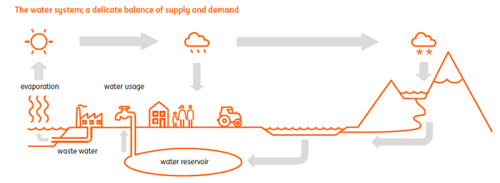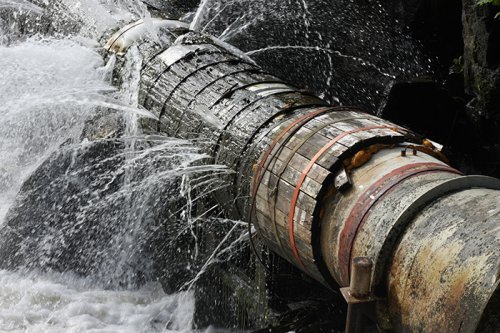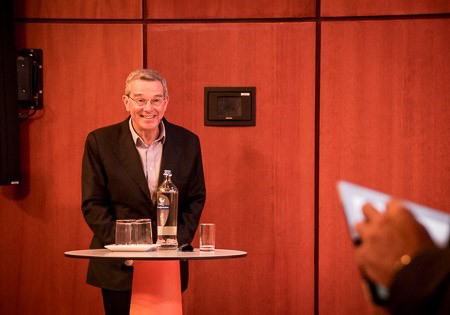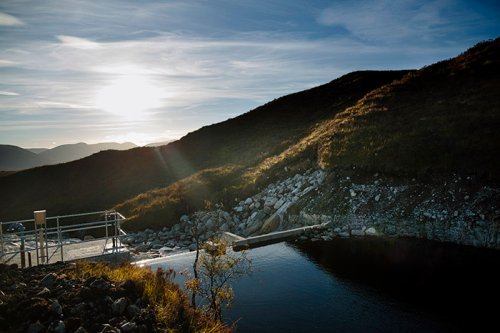How thinking in circles can save water
22 March 2017
There are seven and a half billion people on the planet, yet only 2.5 percent of the world’s water is fresh. Millions continue to have no access to drinking water and that scarcity is set to worsen with an increasing global population and climate change. All is not lost though. A new water report produced by ING shows how the circular economy could save 400 billion of cubic metres of water every year.
If we continue to use water as we currently do, global demand will exceed available resources by 40 percent by 2030.
But with risk comes opportunity.
“Helping the world conserve water starts by realising one thing: water is circular by nature, not linear,” said Gerben Hieminga, author of ING’s newest water report.
Think in circles
Think of water as a closed loop system: one in which water can be reused over and over without losing its value, and then returns to the system – the main principle of the circular economy. This model could save 400 billion cubic metres of water every year in stressed regions, the equivalent of 11 percent of annual global demand or almost the entire water consumption in the US.

We can bring water back to its natural cycle by applying the principles of the circular economy.
This is one of the main finding of the report ‘Less is more: circular economy solutions to water shortages,’ (PDF 5 MB) launched by ING’s economics department. The report lists circular economy solutions to water shortages based on an analysis of six regions of the world (Ghana, Northern India, Bangladesh, California, the Netherlands and the United Arab Emirates), each with different water challenges.
Water, as the world uses it now, has been pushed into a linear model. This means that it becomes more polluted as it travels through the system, which makes it often too contaminated to re-use. The economic and environmental outlook is bleak on current trends, but the shift to a circular water economy holds much promise.
“A circular economy opens up new ways to mitigate the risks of water stress,” said Emilio Tenuta from Ecolab, a provider of water technologies and services, who worked with ING on the water report.
Technology vs mind-set
Developing regions often lack the capabilities to design, build and maintain sewage and waste water treatment facilities.
Take Bangladesh and Northern India, whose water intensive sectors such as agriculture or textiles make up a large proportion of the countries’ GDP: 40 percent of the water in these regions doesn’t reach its destination. In this case, investing in infrastructure provides quick wins in shifting to a circular water system.

The first step to reduce water losses in developing regions is fixing old and leaky pipes.
But the transition to circular water system doesn’t depend on technology only. Knowledge plays a big role.
“Behavioural changes are important as well,” argued Hieminga in the report.
“It is very well possible to make drinking water out of sewage water, which in many cases is purer than the current drinking water. But we’re confronted with the ‘yuck-factor’: people still think that purified sewage water is of less quality.”
In developed regions like California, the Netherlands and United Arab Emirates, infrastructure already plays a big role in reducing water demand and it’s more important to share ideas, raise awareness of risks and identify solutions.
It’s all about collaboration
“In making water systems more circular, it’s not only the water situation that needs to be addressed but also knowledge shortages,” said Hieminga.
This message came through loud and clear at a water expert session recently hosted by ING.
One of the participants was Otto Ferf Jentink, regional manager at Waternet, a Netherlands-based water company.
“It’s not only a matter of techniques. It’s a matter of cooperation,” he said.

“Water problems are shared problems and a single player never brings the solution.” - Ron Bohlmeijer.
“Water management in water-scarce areas is all about collaboration,” said Heineken’s Ron Bohlmeijer, whose company works with ING to explore solutions to water challenges.
Heineken is conscious about their stakeholders’ water use as much as they are about their own water footprint.
“We try to motivate suppliers to work as water-efficiently as possible,” added Bohlmeijer. “One player can’t do everything. We should work together.”
ING partners expert organisations such as the Netherlands Water Partnership (NWP) and is also part of the advisory committee of the Amsterdam International Water Week, where finance is one of the most important topics on this year’s agenda.
“ING is not only involved in the NWP network, but also helps set up water projects with partners in Indonesia, for example, where ING's expertise and involvement is very valuable ,” said Lennart Silvis from NWP.
Ambika Jindal, part of ING’s Sustainability team that is helping clients to shift to more sustainable practices, said that it’s crucial to engage with clients on their water challenges and goals from the start.
“Non-financial risks, like water scarcity, can very quickly become financial risks. By listening to our clients and thinking along with them, we can design financial solutions for more sustainable business activities.”
Change starts by listening.
“Escaping the impact of water crises is impossible. We need to start seeing where each of us can play a role in speeding up solutions,” she said.
Read more about how the circular economy can save water in ING’s newest water report: ‘Less is more: Circular Economy Solutions to Water Shortages' (PDF 5 MB).

